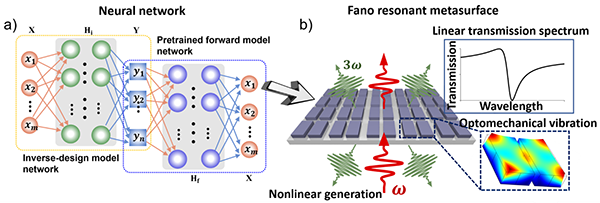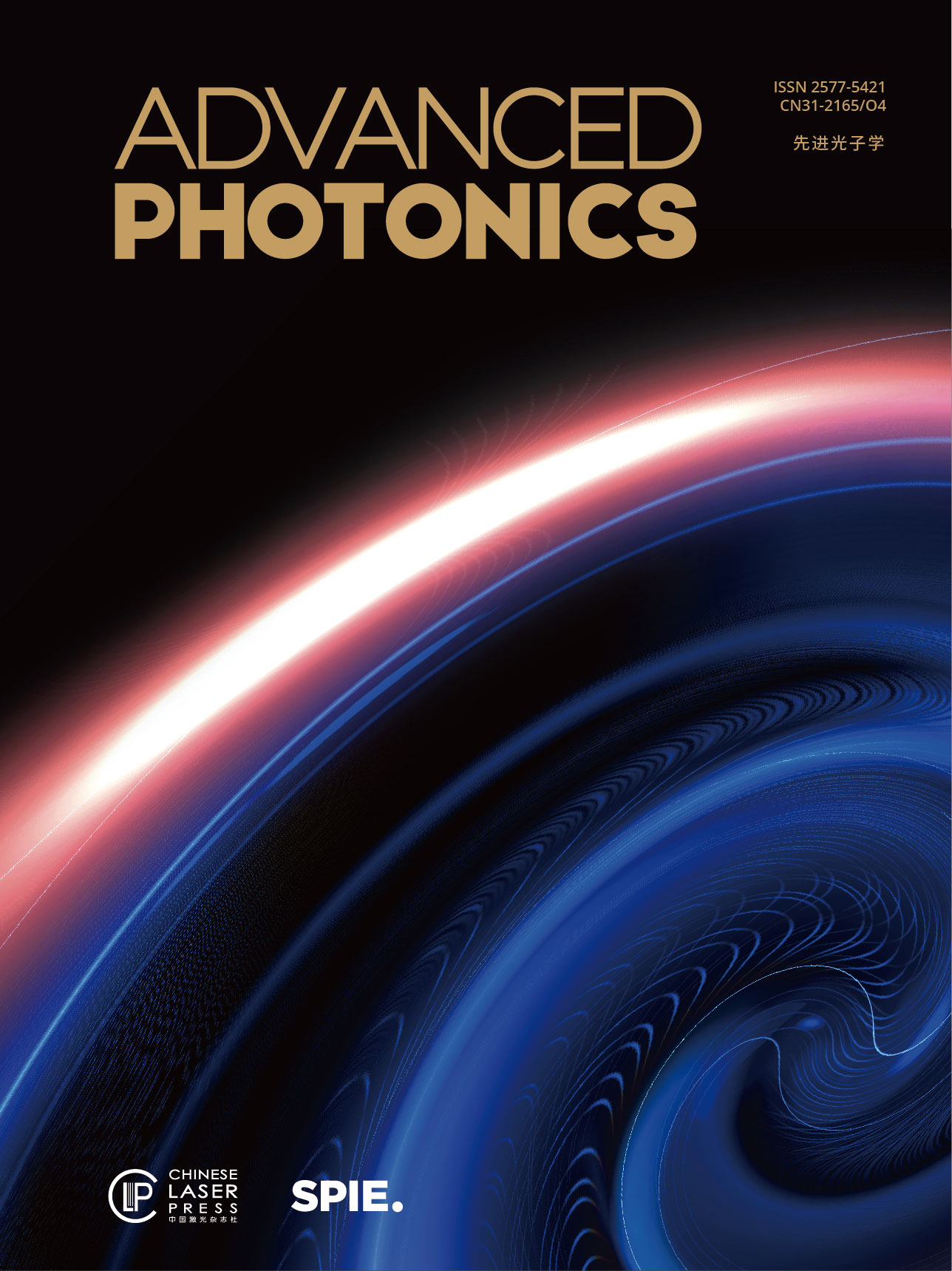Arrays of subwavelength nanoparticles, so-called metasurfaces, have been a subject of intense research recently, due to their extraordinary optical properties, which can find diverse applications, such as superlenses, tunable images, and holograms. Over the past decade, one of the widely studied response of metasurfaces is Fano resonances, which generally occur as a result of close interaction of a discrete (localized) state with a continuum of propagation modes. It has been shown that Fano resonances can increase the storage time of photons, within subwavelength resonators. Such a characteristic can facilitate various applications including enhanced mixing light colours, optical sensing, optoacoustic vibrations and narrowband filtering.
Traditionally, direct optimization is the dominant approach for designing metasurfaces to exhibit desired properties, e.g. an intense Fano resonance. In this approach, a large number of parameters, such as material properties, height, length and width of each nanoparticle, and separation of nanoparticles, are kept constant, where only one or two parameters get optimized via brute-force simulations. This approach is very time-consuming and sometimes is not even capable of offering a solution.
Recently, propelled by its success in computer vision and natural language processing, deep learning, using an artificial neural network, has emerged as a revolutionary and powerful methodology in the field of nanophotonics. Applying the deep learning algorithms to the nanophotonic inverse design can introduce remarkable design flexibility that can go far beyond the conventional methods. This technique enables a fast prediction of complex optical properties of nanostructures with intricate architectures, which is impossible to achieve based on conventional optimization methods.
A team of researchers from the University of New South Wales, The Australian National University and The Queensland University of Technology has recently published a paper in Advanced Photonics, Vol. 2, Issue 2, 2020, which demonstrates a novel application of deep learning approach to inversely design high-quality Fano resonant metasurfaces (Lei Xu, Mohsen Rahmani, Yixuan Ma, et al. Enhanced light–matter interactions in dielectric nanostructures via machine-learning approach[J]. Advanced Photonics, 2020, 2(2): 026003).
Such a metasurface consists of two identical silicon nanobars that are periodically arranged in the plane. It allows to store and control the optical energy within the metasurfaces at a given wavelength. The authors have shown that this approach can predict a metasurface design with desired characteristics, such as the linewidth, amplitude and spectral position (as illustrated in Fig. 1).
The resonance characteristics were chosen to fulfil the requirements of two distinct applications, simultaneously: i) converting the light colour from near-infrared to visible (nonlinear generation), with 400+ times more robust response, as compared with the off-resonant responses from the same metasurface; ii) enhancing the light-induced mechanical vibrations (phonons) of nanoparticles by 100+ folds, as compared with off-resonant frequencies of the same metasurface.
Such a bi-functional metasurface can find a wide range of applications in precision mass sensors, micro-manipulation, optomechanics, and sensing biochemical materials based on photon-phonon conversions. Meanwhile, such a unique combination of artificial intelligence with nanophotonics holds tremendous potential for realizing other multi-functional metasurfaces for being exploited in meta-lenses, security holograms, image manipulation and many others.

Fig. 1. (a) Schematic of a tandem neural-network used for the inverse design of a Fano resonant metasurface for enhancing (b) nonlinear generation and optomechanical vibrations.


